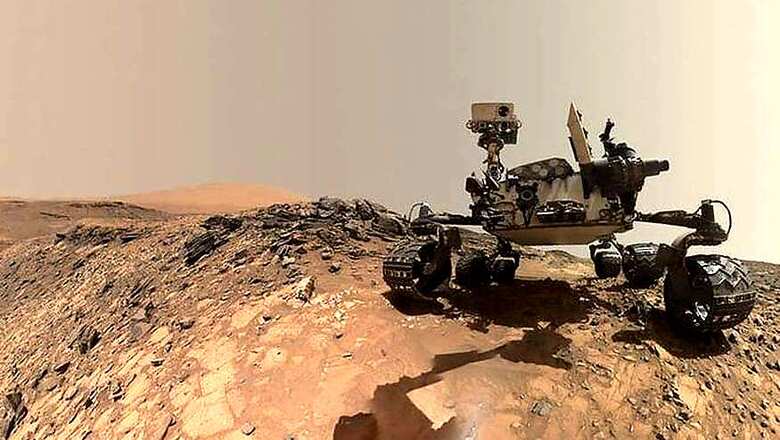
views
Mars rover Opportunity has reached the main destination of its current two-year extended mission -- an ancient fluid-carved valley incised on the inner slope of a vast crater's rim, NASA has said.
As the rover approached the upper end of "Perseverance Valley" in early May, images from its cameras began showing parts of the area in greater resolution than what can be seen in images taken from the orbit above Mars.
"The science team is really jazzed at starting to see this area up close and looking for clues to help us distinguish among multiple hypotheses about how the valley formed," said Opportunity Project Scientist Matt Golombek of NASA's Jet Propulsion Laboratory (JPL) in Pasadena.
The process that carved Perseverance Valley into the rim of Endeavour Crater billions of years ago has not yet been identified.
It might have been flowing water, or might have been a debris flow in which a small amount of water lubricated a turbulent mix of mud and boulders, or might have been an even drier process, such as wind erosion.
The mission's main objective with Opportunity at this site is to assess which possibility is best supported by the evidence still in place, NASA said.
The upper end of the valley is at a broad notch in the crest of the crater rim. The rover team's plan for investigating the area begins with taking sets of images of the valley from two widely separated points at that dip in the rim. Also read: Facebook to Refund Advertisers Video Ad Link Bug
This long-baseline stereo imaging will provide information for extraordinarily detailed three-dimensional analysis of the terrain.
The valley extends down from the rim's crest line into the crater, at a slope of about 15 to 17 degrees for a distance of about two football fields.
"The long-baseline stereo imaging will be used to generate a digital elevation map that will help the team carefully evaluate possible driving routes down the valley before starting the descent," said Opportunity Project Manager John Callas of JPL.
Reversing course back uphill when partway down could be difficult, so finding a path with minimum obstacles will be important for driving Opportunity through the whole valley.
Researchers intend to use the rover to examine textures and compositions at the top, throughout the length and at the bottom, as part of investigating the valley's history.
Opportunity and the next-generation Mars rover, Curiosity, as well as three active NASA Mars orbiters and surface missions to launch in 2018 and 2020 are all part of ambitious robotic exploration to understand Mars, which helps lead the way for sending humans to Mars in the 2030s. Also read: Google Doodle Celebrates Antikythera - World's First Computer



















Comments
0 comment